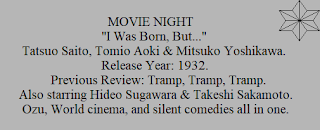Cast:
Alejandro Jodorowsky (El Topo), Brontis Jodorowsky (Hijo / Topo's son), José Legarreta (Moribundo), Alfonso Arau (Bandido 1), José Luis Fernández (Bandido 2), Ali Junco (Bandido 3), Gerardo Zepeda (Bandido 4), René Barrera (Bandido 5), René Alís (Bandido 6), Federico Gonzáles (Bandido 7), Vicente Lara (Bandido 8), Pablo Leder (Monje 1), Giuliano Girini Sasseroli (Monje 2), Cristian Merkel (Monje 3), Aldo Grumelli (Monje 4), and Mara Lorenzio (Marah / La mujer - The Woman) Written and Directed by Alejandro Jodorowsky.
Review:
"Was born in Bolivia, of Russian parents, lived in Chile, worked in Paris, was the partner of Marcel Marceau, founded the 'Panic' movement with Fernando Arrabal, directed 100 plays in Mexico, drew a comic strip, made 'El Topo,' and now lives in the United States -- having not been accepted anywhere, because in Bolivia I was a Russian, in Chile I was a Jew, in Paris I was a Chilean, in Mexico I was French, and now, in America, I am a Mexican."
One does not draw a straight line when it comes to looking at directors from all across the world, because one does not just find a director and their perspective. Alejandro Jodorowsky was born in Chile in 1929 to Ukranian Jewish immigrants. He studied at the University of Chile for a time before dropping out; he soon dabbled in writing plays and soon founded an experimental theatre group. In 1953, he moved to Paris, France, where he would do various things, such as working with Marcel Marceau and his first film was a collaboration with Saul Gilbert and Ruth Michelly in a 1957 short called The Severed Heads [La Cravate]. He would soon add Mexico to his travels, where he wrote and drew a comic strip for several years. Fando y Lis [Fando and Lis] (1968) was his first feature film, and it is most memorable for the stir it created on premiere at the Acapulco Film Festival because of its "blasphemous" nature. Leave it to midnight movie advocates to help the film. Ben Barenholtz saw a private screening of the film and liked it enough to showcase it at his Elgin Theater, generally showing it around midnight. The success of these screenings came from notable names like John Lennon and Yoko Ono, who liked it so much that they convinced Allen Klein (former manager of the Beatles) to buy the rights of the film and help distribute it across the country. Klein helped fund Jodorowsky's next venture with The Holy Mountain (1973), but it was not as successful; later, when Klein wanted a more commercial venture for the director to adapt, Jodorowsky suggested doing Dune and the resulting disagreement led to Klein withholding El Topo [The Mole] from circulation for decades. At any rate, Jodorowsky has worked in a variety of roles for several decades: film director (eight features and a documentary), writer (comics, poetry), "psychomagic" therapist...you get the idea.
Besides the fact that Jodorowsky is the main star, his young son Brontis (age seven) is featured alongside dwarf and mutilated actors. The actors perform as one might see from an arthouse movie in curiosity - i.e. it may be amateur, but it is better than if it was pros trying to be clever (besides, when it comes to actor-directors, Jodorowsky does fine). Anyway, the thing about surreal movies, particularly ones that can fall into the realm of the "spaghetti Western" with its raw energy that is quite fluid with all the symbolism and commentary presented in 125 minutes. It is the kind of movie that one just has to experience for themselves without trying to go all-in on interpretation, since it is the wonder that matters more, where making sense is an illusion. It is a hypnotic experience, seemingly ripe for the arthouse crowd in all of the best and worst ways (in other words, one will really, really like what it does.... or really not dig it). It can be described as a" redemption tale", in that one is sort of watching a man confront "spiritual enlightenment" through four masters of the gun that deal with various philosophies....and then he dies and is reborn in a cave with underground dwellers that ends with folks walking off on a horse. Well, there is plenty to talk about in between those moments, but it is probably best to not think too hard about it. This is the kind of movie where a cult does a round of Russian roulette as a form of "miracle" that sees adults and a kid partake in it. I think most of the film works in a presentation of life and death, where looking for answers will only result in more questions, much in the same way that looking for enlightenment will only result in a continued search. By the time everything ends, one can only hope they have found what they were looking for (see, am I talking about the movie...or life? Enjoy guessing!). As a whole, if you are looking for an acid Western to enjoy late at night to perhaps examine piece by piece for its display of imagery and exploitative energy, this is likely the one you are waiting for.
Overall, I give it 9 out of 10 stars.
Well, it is finally over for January. I hope looking at thirteen new directors was as interesting for you as it was for me. It might become something worth doing at least once every year, so any suggestion is helpful. See you later...













